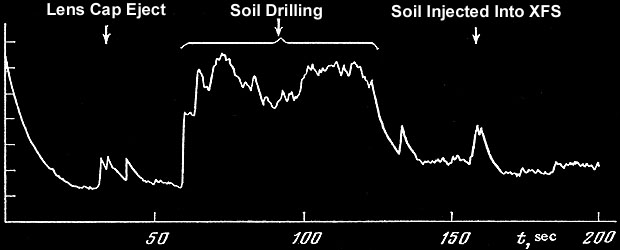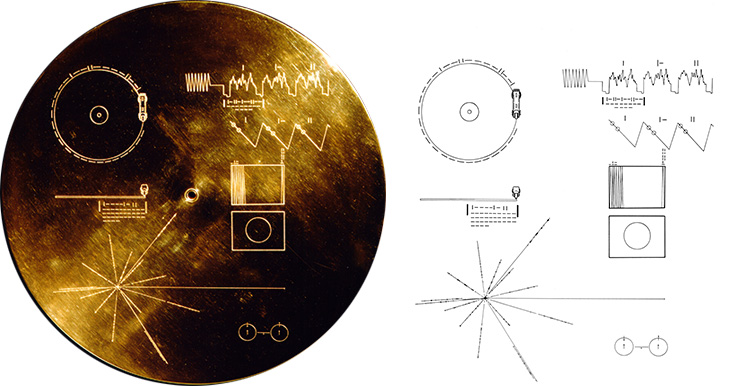
Even though sound cannot propagate through the vacuum of space, that doesn’t mean we don’t know what space sounds like. Audio recordings have provided a wealth of information for space scientists almost since the beginning of the space era. Because of their simple and robust operation, microphones have been included on many past and recent space missions, on which they have recorded wind sounds and dust sounds. They will even accompany NASA’s return mission to Saturn’s moon Titan in the 2030s. Audio recordings allow us to reach far across space but also back and forth through time, and probably the last, soulful vestiges of human civilization will persist in the form of audio long after we’re gone.
Currents of History

Blind Willie Johnson was born at the end of the 19th century in Texas, smack in the middle of the Jim Crow era south. Blinded at an early age (possibly as the result of parental abuse), Johnson became an itinerant preacher and well-known blues singer in the 1920s and 30s. Between 1927 and 1930, he made a series of recordings of original songs, many of which went on to become famous in his time and all of which went on to become landmarks in American music.
Recordings from this era have a distinctive, raspy quality to the audio because of the way recording equipment worked. The first microphone was invented in the mid-1850s (before Maxwell’s Equations for electricity and magnetism were even developed), and it consisted of a vibrating diaphragm and an electromagnet. By inducing vibrations in the diaphragm, sound waves created time-varying electric and magnetic fields, which, in turn, drove electric current down a wire behind the diaphragm. The electric current therefore had the same frequency and amplitude as the sound waves and could be used to drive a small motor. This motor was connected to a needle that would convert the frequency and amplitude into up-and-down motion to engrave a wax disk, a record. The fact that these microphones operated via physical motion meant they had a limited frequency response and were more sensitive to high-frequency than low-frequency sounds, which is why old recordings have “tinny” sound quality.
Nowadays, modern microphones use a variety of sophisticated electrical components, combined with digital processing, to give a higher-fidelity sound. But the warmer, rattly sound of records has made them popular again in recent years.
Audio Postcards from Another World

Space scientists have used the power of sound to study other worlds. Some of the first microphones in space were sent to Venus in the 1980s on the Venera space probes by the Soviet space program. The microphones recorded not just the sounds of several spacecraft instruments operating but also the lonely whirl of wind on Venus’ surface. Using the sound volume, scientists were able to estimate wind speeds at the surface of about 50 cm/s or about 1 mph.
Scientists have continued to send microphones into space, and one of the most recent and highly successful microphone experiments rode along on the Mars 2020 Perseverance rover. The SuperCam instrument on Perseverance includes a microphone, alongside a powerful infrared laser, the Laser-Induced Breakdown Spectroscopy experiment, LIBS. By vaporizing minerals at a distance, LIBS allows Perseverance to analyze the spectrum of the mineral vapor to determine its composition. The microphone supports this experiment by listening to the ticking-clock sound of the laser at work – the amplitude of the sound relates to the mineral hardness and thereby provides additional information about the zapped rocks.
But the microphone has done even more. As with the Venera mics, scientists have listened to and estimated the speed of martian winds. The whirring sounds of the Ingenuity drone in flight have a strange muffled quality, thanks to the unique acoustic properties of the thin martian atmosphere. Scientists have even recorded the sound of a dust devil blowing over the rover: individual dust grains crashing into the microphone make a distinct popping sound.
The Once and Future Recording

The simplicity and versatility of microphones means they will continue to serve as powerful instruments for doing space science. In 2034, NASA’s Dragonfly mission, an enormous rotorcraft designed to explore Saturn’s moon Titan for signs of life, will carry a rich suite of instrumentation, as well as microphones for recording that world’s winds.
The same principles used on Mars, adapted to Titan’s frigid, nitrogen-rich atmosphere, will allow scientists to estimate wind speeds, listen to the spacecraft’s operations, and probably even catch the clattering of dust and sand grains crashing into the microphone. These recordings will complement audio recordings made on Titan during the Huygens probe mission back in 2005.
So even though, in space, no one can hear you scream, the power of sound in space will persist long after NASA has stopped exploring the solar system. The Voyager spacecraft, launched in the 1970s to explore the outer solar system, famously carried phonograph records containing a variety of audio recordings. The recordings include greetings in many languages, as well as songs from several cultures around the world, with Blind Willie Johnson’s soulful “Dark was the Night, Cold was the Ground” among them. The spacecraft recently entered interstellar space, meaning they are now on their own independent orbits around the Milky Way. Their records were made of gold to keep them from tarnishing. Since the spacecraft will probably only encounter interstellar dust once in a while, scientists have estimated that the records should remain usable for as long as a billion years.
On Friday, Apr 7 at 7:30p MT, join Boise State Physics for our First Friday Astronomy event when we will host Dr. Baptiste Chide of the Los Alamos National Laboratory. Dr. Chide will discuss his work on acoustics in the martian atmosphere and on the Mars 2020 SuperCam microphone The event will be presented in-person on campus (room 112 in the Education Building) and via live-stream – http://boi.st/astrobroncoslive.